Lawn & Garden Irrigation Tips
Treat your property right
It’s hard to believe, but some homes use more water outdoors in the summer than they use for all other purposes all year.
The average suburban house uses at least 30% of its water for irrigation, even though more than 50% of landscape water is lost due to evaporation or over-watering.
The good news is that highly attractive, low-maintenance landscapes are possible without enormous amounts of water. You can conserve lawn and garden water usage and have an impact far beyond your property lines.
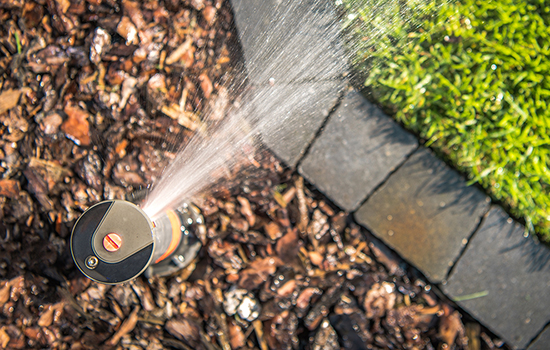
How to conserve water in your lawn or garden
Ways to minimize lawn watering
- Reduce the size of your lawn by planting shrubs, berry bushes, or other low-maintenance ground covers – or just let it "go native!”
- Let your grass grow longer. This will encourage deeper roots and keep your grass cool and moist during dry spells.
- Leave grass clippings on the lawn to decompose, nourish the grass, and reduce your need for fertilizers.
- Use directional sprinklers and place them where they water just the lawn, not driveways or sidewalks.
- Plant trees to shade your lawn, along with drought-resistant grass and other plants.
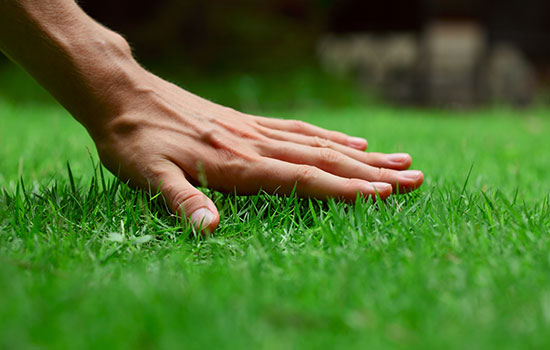
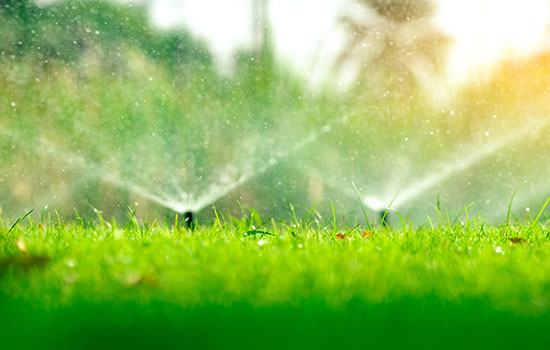
What's the best time to water your lawn?
- Avoid watering in the middle of the day. Water early in the morning or in the evening. That will reduce evaporation and allow more water to reach your lawn’s root zone.
- Hold off on watering if the forecast calls for rain. Consider using a rain gauge to determine when your lawn needs water and to measure how much you’re applying. Generally, turf grasses need about ¾"–1" of water per week.
- Water outdoors only when needed, not on a set schedule. If your grass springs back after you step on it, it doesn’t need watering!
Ways to conserve water in the garden
- Water by hand. Automated systems use significantly more water, not all of which is actually needed.
- Install drip-irrigation systems in your garden rather than sprinklers. But hand-watering is still best!
- Use a rain barrel to capture water running from your roof to use in your garden.
- Water your plants with gently-used greywater from your bathroom sink, shower, tub, or washing machine.
- Plant gardens to take advantage of rainwater running off other parts of your property.
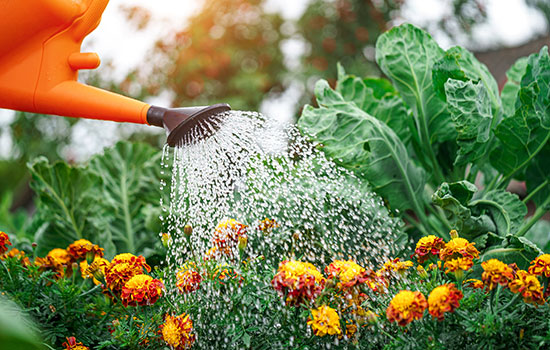
Find Your Better Yard
Let’s face it…your yard may no longer be pulling its weight.
Find the landscape that fits your lifestyle
Maybe your yard needs to catch up with your new interests, family structure or other changes? Now is a great time to find the landscape that works for you, your family and the planet.
For inspiration, we’re offering a free WaterSense guide to help your yard meet its full potential. “Find Your Better Yard” can make your yard look better, function better, and become more water efficient. It’s packed with ideas, illustrations, descriptions and links to get you started.
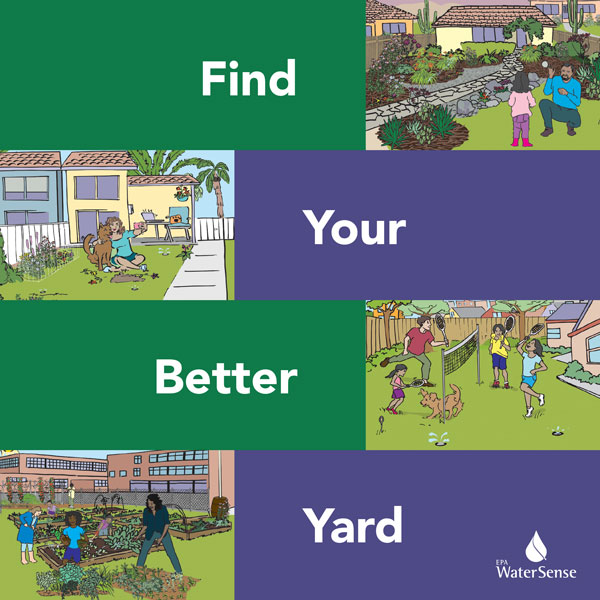
Tips for Saving Water
Find your guide to dozens of easy, practical ways to make the most of something we just can’t do without.
Learn More